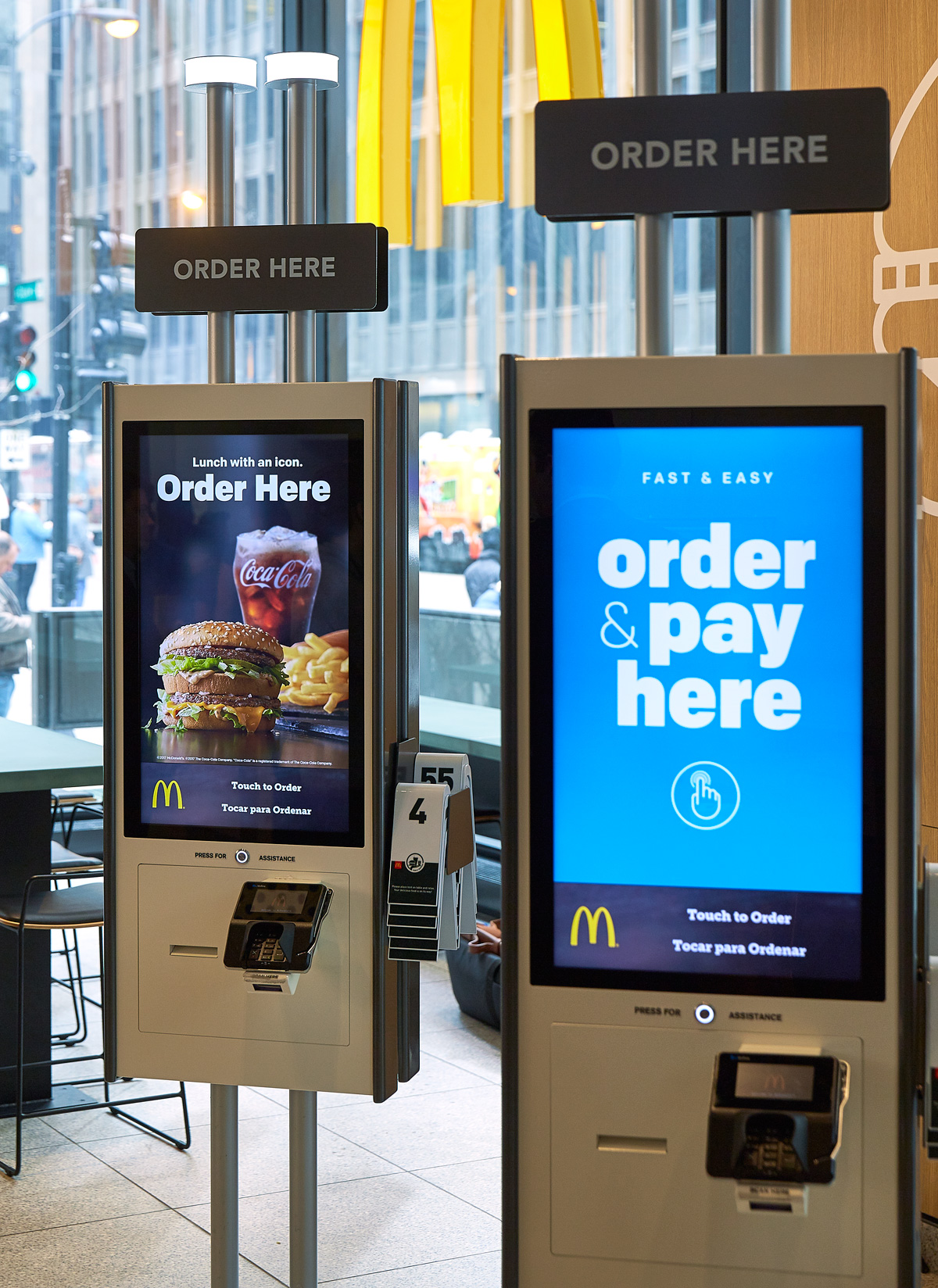McDonald’s Experience of the Future remodel program has progressed at a blurring pace. This past third quarter alone, the fast-food giant completed roughly 1,000 projects. To that point, McDonald’s transformed north of 3,000 restaurants. During a 90-day Q2 stretch earlier in the year, the chain converted 1,300 restaurants to the design, known for its kiosks, remodeled counters, digital menu boards, and refreshed digital elements, like designated parking sports for curbside pick-up through mobile order and pay. That measures to roughly 10 additional restaurants every day. This prompted chief executive Steve Easterbrook to call it “the largest construction project in our history,” during an October conference call. Was this pace too quick for franchisees, however? While the sales and guest count lift associated with the new design are desirable, the massive construction project remains capital intensive and burdensome for other areas of McDonald’s day-to-day business.
READ MORE: McDonald’s continues to revamp for the future.
Chief financial officer Kevin Ozan said during the same call that EOTF restaurants were experiencing a temporary decline in labor productivity due in part to a combination of lower guest counts and the restaurant paying crew during construction downtime. “The downtime in our restaurants ranges from partial, for example, when the drive thru remains open but the lobby is closed for remodel, to full when a restaurant has a large-scale project and the restaurant completely closes for a short period of time,” he said. “The sales and guest counts recovery period after we complete a project have also been a little inconsistent.”
To that point, the initiative hit year-to-date same-store sales roughly 0.5 percent, Ozan said. In addition to the downtime issues, there’s recovery time and how long it takes McDonald’s to get back to the kind of volumes “that we were at plus less than we expect and then net of that is obviously the sales lists we’re getting,” Ozan added.
In response to some of these challenges, and to help franchisees cope with the investment, McDonald’s is slowing the pace of domestic remodels, Bloomberg reported.
McDonald’s previously said it planned to complete more than 12,000 restaurants by the end of 2019 and have most of its 14,000-plus U.S. locations complete by 2020. According to the Chicago Tribune, operators now have until 2022 to refresh stores.
McDonald’s unveiled a $6 billion outline over the summer to modernize the system.
While the company said it would front 55 percent of the funds for the remodels completed by 2020 and 40 percent for projects that take another year or two, the chain has still faced some pushback from operators. Remodel costs range from $160,000–$750,000. The higher end accounts for those locations that have to tear down and rebuild.
Thanks to an ongoing refranchising initiative, more than 90 percent of McDonald’s global locations are run by franchisees. That’s closer to 95 percent stateside. In October, franchisees banded together and voted a “resounding yes” to needing a self-funded advocacy group during a meeting in Tampa, Florida. More than 400 owners met for an organizational gathering of what the group is calling the “National Owners Association.” This “united, representative owner advocacy group,” was formed so franchisees can work with McDonald’s corporate to “positively impact the system for the benefit of the franchisee owners, our employees, customers, the company, and ultimately the shareholders,” a meeting recap posted online read.
Franchisees, reportedly, hoped to address issues related to shrinking cash flow and the burden of McDonald’s remodel program, among other concerns. Per the WSJ, one operator said he was collecting debt to remodel units in line with “new specifications from McDonald’s executives.” They’re scheduled to meet again in December.
McDonald’s has made some recent changes to aid operators, including offering flexibility for local operators to push value deals. One example is breakfast, where McDonald’s shifted some of its spend to regional. It’s also letting local co-ops choose which items and what deals are best suited for their markets.
The chain also consolidated its media buying into a single agency earlier in the year to provide media-buying alternatives to some local markets.
Per The Chicago Tribune, Bloomberg Intelligence analyst Mike Halen said, “[The extended timeline] is a response to some of the franchisees’ concerns. The franchisees recently met because they’re not happy with their profitability now. To me, this looks like an answer to that.”
A spokeswoman for McDonald’s provided the publication with an emailed statement as well.
“Our growth strategy remains rooted in making positive food changes, offering new restaurant experiences and providing our guests better value. The adjustments we are making will allow us to continue on this path and provide greater local operator flexibility.”
McDonald’s posted stellar global same-store sales of 4.2 percent, year-over-year, in the third quarter, marking 13 consecutive quarters of positive global gains. U.S. comps increased 2.4 percent, international lifted 5.4 percent, and “high growth” international markets saw a 4.6 percent boost.
Additionally, McDonald’s revenue of $5.37 billion, while down 7 percent year-over-year due to the company’s refranchising initiative, beat Wall Street’s consensus estimate of $5.32 billion.












